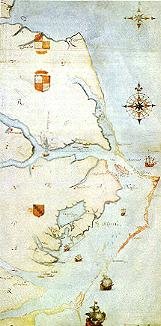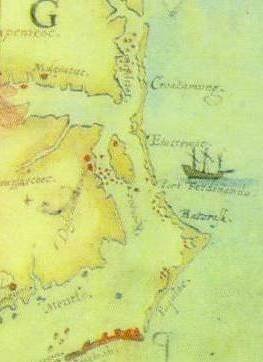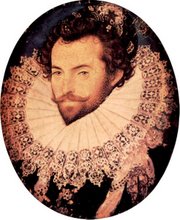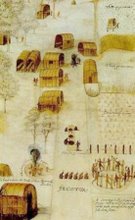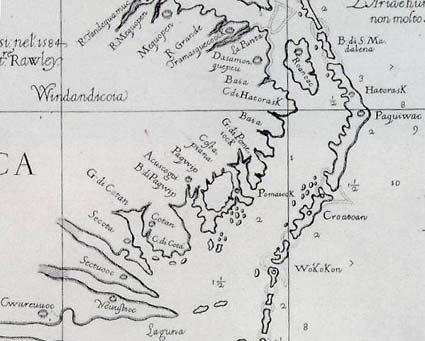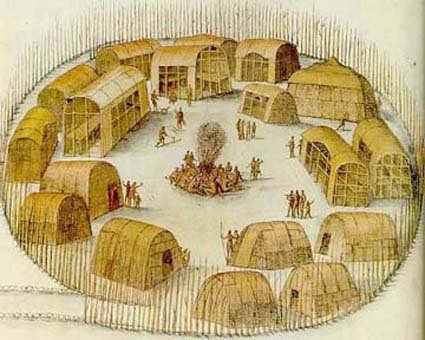 Early Vistor to Roanoke
Early Vistor to Roanoke
One of the illustrious figures of the sixteenth century to visit North Carolina was Sir Francis Drake, who came in June 1586. Like Sir Walter Ralegh, Drake was a Devon man. Born at Crowndale, near Tavistock, about 1543, he was the son of Edmund Drake, a sailor who became a yeoman farmer. In 1549 when the Roman Catholic peasants of the West Country rebelled against the new prayer book, the Drakes, who were Protestants, lost all their possessions and had to seek refuge first in Plymouth and later in Kent, where they lived aboard an old ship. There the elder Drake preached to the sailors. Because the family was persecuted for its religious beliefs under Mary Tudor, Francis grew up a staunch Protestant.
Beginning his career in 1566, at about age 23, Drake became an ocean sailor by joining his relative, John Hawkins, in the slave trade with the Spanish colonies in the New World. Stopped by a large Spanish force at San Juan de Ullua in 1568 Hawkins and Drake made an agreement with them but when it was to their advantage, the Spanish attacked. After the ensuing battle Drake hastily returned to Plymouth and was later accused by Hawkins of desertion. From these expeditions Drake learned much about ships and the Western Hemisphere, and he developed a great hatred for the Spanish. For the rest of his life he conducted a personal war against Spain.
Drake returned to the Caribbean in 1569, 1571, and 1572, and attacked Panama in the latter two voyages. In 1572 he was wounded while two of his brothers died in battle. When he returned to England, Queen Elizabeth had made peace with Spain and he had to go into hiding, possibly in Ireland, where he reappeared in 1575. At that time he announced that he was going to the Mediterranean to open up the spice trade in Alexandria, but his true plan was to circumnavigate the world. In 1581, after his return from this successful and profitable voyage, Queen Elizabeth knighted him.
Relations with Spain continued to deteriorate, and in 1585 Drake returned to the West Indies. On Hispaniola he captured the supposedly impregnable city of Santo Domingo. Later in Columbia he captured Cartagena. By now with one-third of his men dead and many others unfit for service, Drake was unable to attack Havana. After sacking St. Augustine, he sailed up the coast to Roanoke Island where he arrived on 26 June 1586. There he visited Sir Walter Ralegh's colony headed by Ralph Lane, planted in 1585. He found a disheartened group of men. The once-friendly Indians were now hostile, and the supply ship was late. Drake offered Lane victuals for one month and a ship, the 40 tun Francis. He also agreed to take some of Lane's weaker men back to England and to replace them with his own men. A major storm, however, forced the Francis out to sea and caused a change in plans. Drake offered Lane a larger ship, the 170 tun Bark Bonner but it was too large to pass through the inlets. Instead Lane and his colonists decided to return to England with Drake.
This expedition did not make great profits for investors but it did inflict great damage on the Spanish Empire and led almost directly to the launching of the Armada that Philip II began to assemble. The Spanish planned to attack in 1587; but, learning of these plans, Drake attacked Cadiz and Lisbon, where he destroyed ships, and at Cape St. Vincent, where he burned barrel staves needed for casks for food and water. These actions delayed the Armada until 1588 and caused it to sail with unseasoned casks which leaked water and allowed food to spoil.
Full Article Here:
http://www.nps.gov/archive/fora/drake.htm





